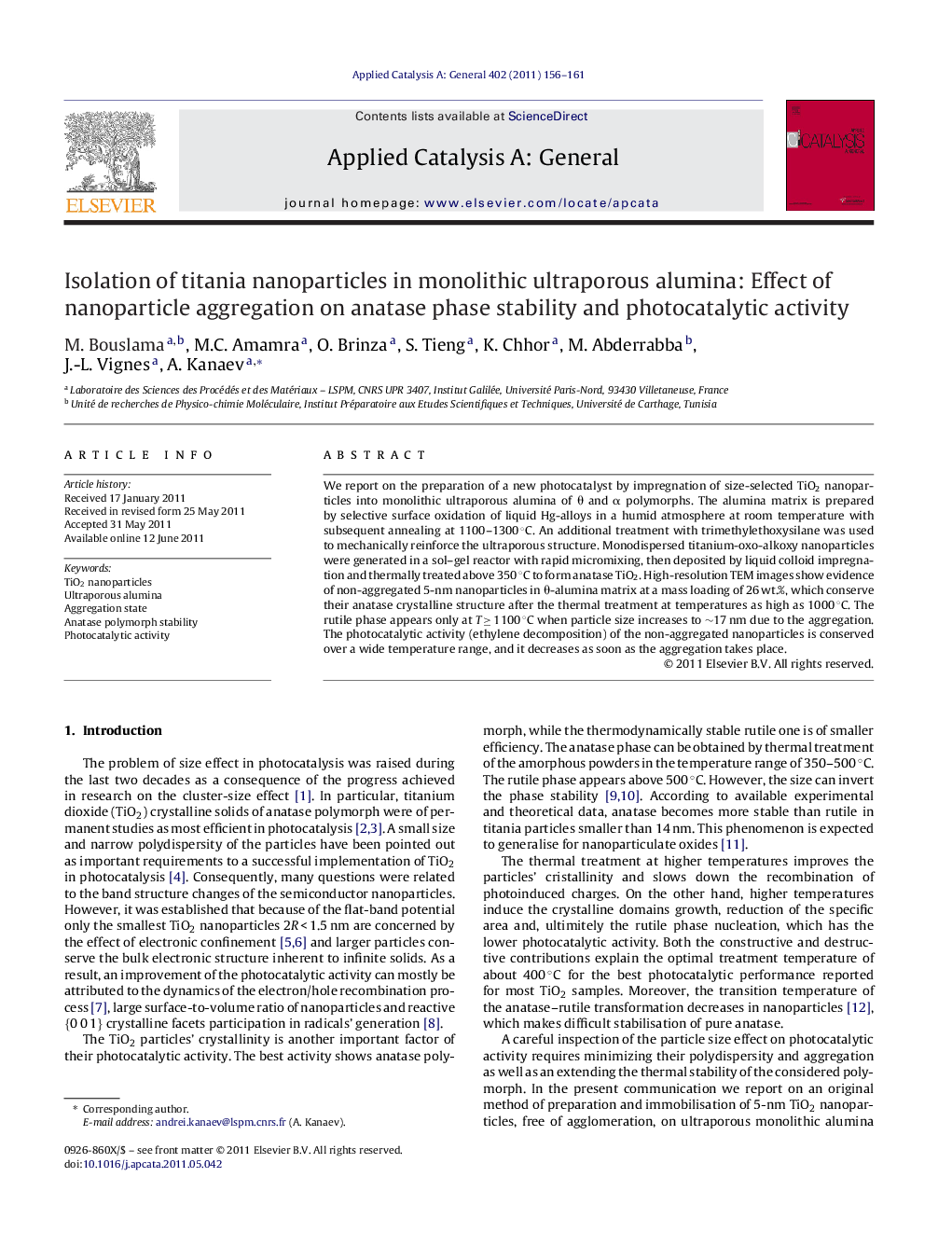| Article ID | Journal | Published Year | Pages | File Type |
|---|---|---|---|---|
| 41251 | Applied Catalysis A: General | 2011 | 6 Pages |
We report on the preparation of a new photocatalyst by impregnation of size-selected TiO2 nanoparticles into monolithic ultraporous alumina of θ and α polymorphs. The alumina matrix is prepared by selective surface oxidation of liquid Hg-alloys in a humid atmosphere at room temperature with subsequent annealing at 1100–1300 °C. An additional treatment with trimethylethoxysilane was used to mechanically reinforce the ultraporous structure. Monodispersed titanium-oxo-alkoxy nanoparticles were generated in a sol–gel reactor with rapid micromixing, then deposited by liquid colloid impregnation and thermally treated above 350 °C to form anatase TiO2. High-resolution TEM images show evidence of non-aggregated 5-nm nanoparticles in θ-alumina matrix at a mass loading of 26 wt.%, which conserve their anatase crystalline structure after the thermal treatment at temperatures as high as 1000 °C. The rutile phase appears only at T ≥ 1100 °C when particle size increases to ∼17 nm due to the aggregation. The photocatalytic activity (ethylene decomposition) of the non-aggregated nanoparticles is conserved over a wide temperature range, and it decreases as soon as the aggregation takes place.
Graphical abstractFigure optionsDownload full-size imageDownload high-quality image (97 K)Download as PowerPoint slideHighlights► Titania nanoparticles were built in alumina matrices. ► Aggregation of the nanoparticles was shown to be prohibited. ► Nanocrystals in these alumina matrices retained their thermal stability. ► The non-aggregated titania nanoparticles show high photocatalytic activity.
